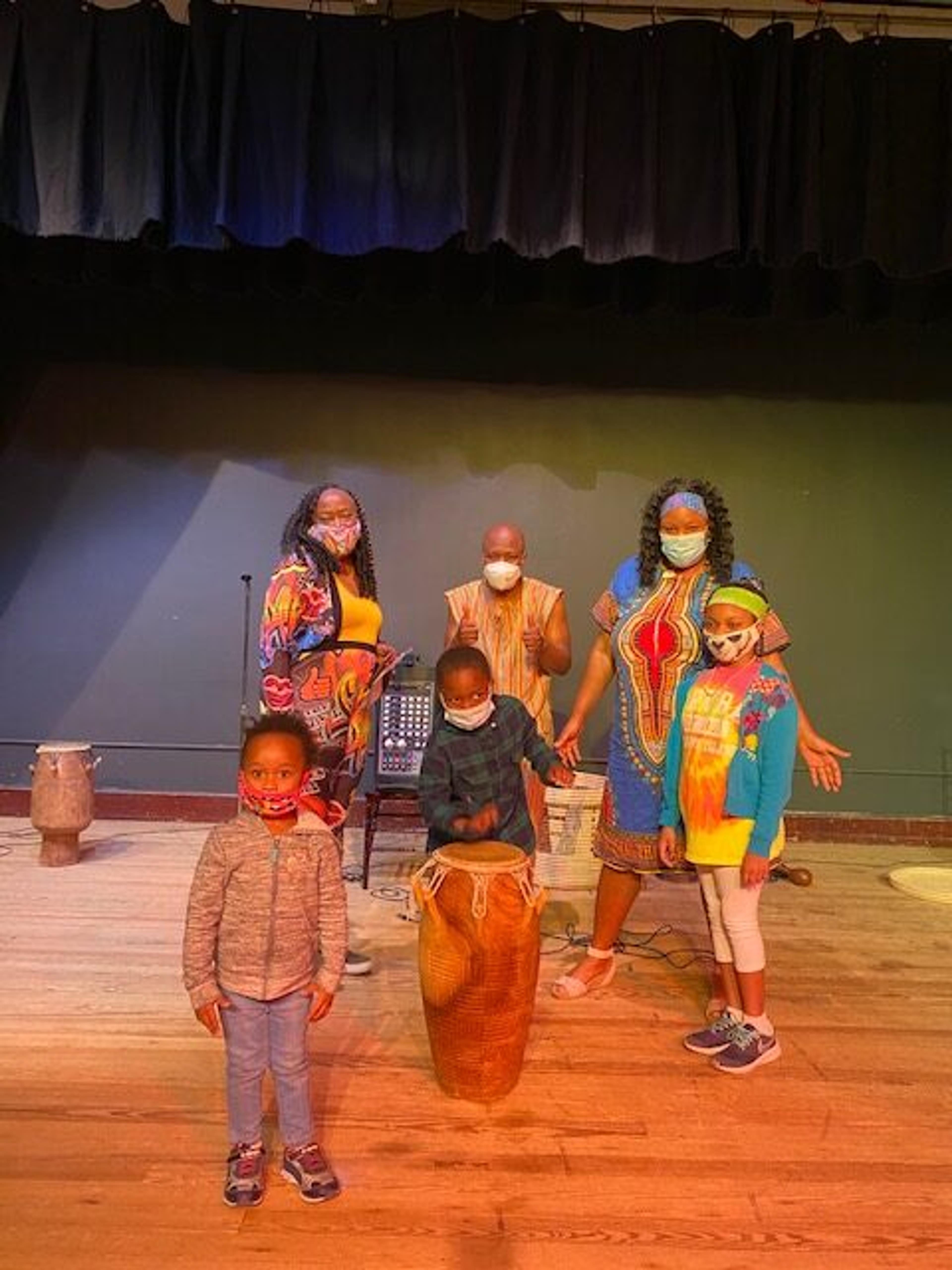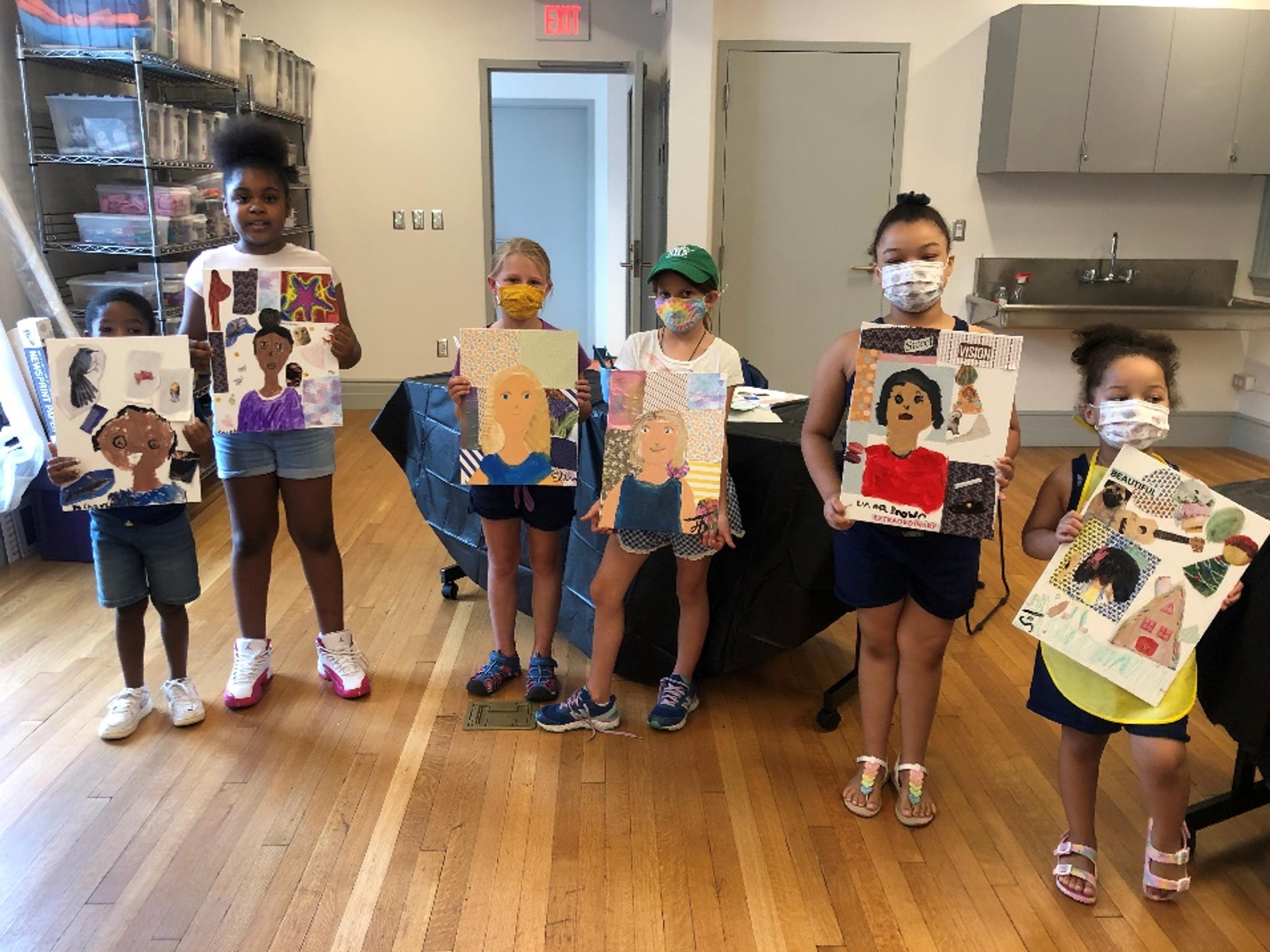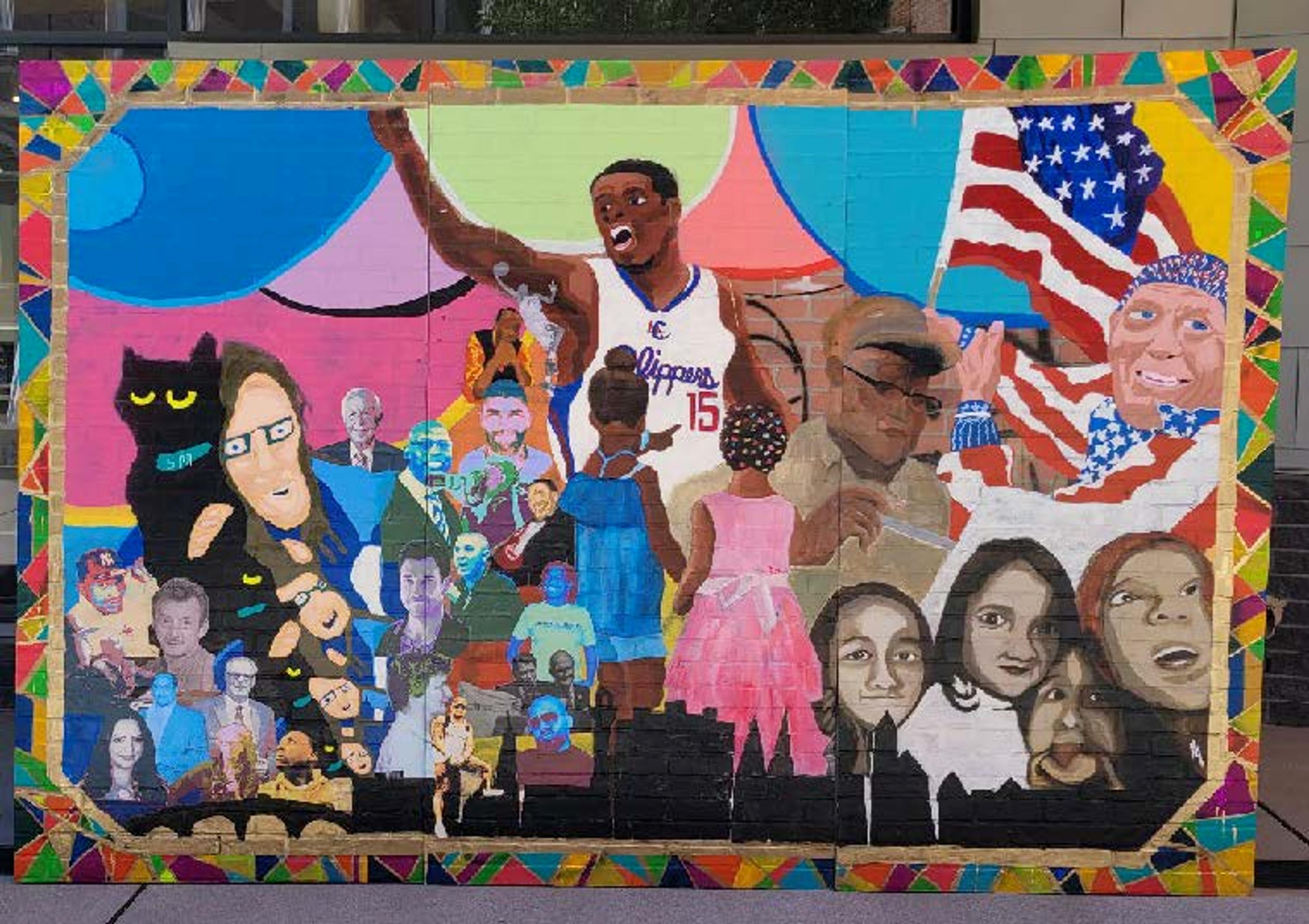
Participants enjoy the drumming sounds of a Soro Bindi workshop. Courtesy of the Mattatuck Museum, 2021.
Mattatuck MuseumPartner Story
Inspired by one hundred years of African American and Black art making, the Mattatuck Museum expands art access to Waterbury’s African American and Black communities.
Conversation and Collaboration
In summer 2021, the Mattatuck Museum in Waterbury, Connecticut, displayed works by some of today’s most influential contemporary and modern Black artists. Kara Walker, Kehinde Wiley, Romare Bearden, and Jordan Casteel were just some of the artists in Mattatuck’s A Face Like Mine exhibition. Featuring over seventy artworks from the 1920s to today, the exhibition examined representations of African American and Black experiences through photographs, sculpture, textiles, paintings, and multimedia. Arranged thematically, A Face Like Mine used art to explore shifting ideas on identity, community, racial politics, and performance, honoring a century of African American and Black art and art making.
As a member of the MFA Boston Cohort in the Art Bridges Cohort Program, the museum borrowed works from several collections, including Art Bridges’ Brenda P , 1974 by Barkley L. Hendricks. The breadth of works featured in A Face Like Mine speaks to the expansiveness of African American and Black experiences – experiences that informed the Mattatuck’s Learning & Engagement project supported by Art Bridges.
To be more responsive to African American and Black communities in Waterbury, the museum expanded pre-existing partnerships while cultivating new ones with local partners such as the Black Business Alliance and the Center for Racial Dialogue and Communal Transformation, among several others. The museum partnered with churches to advertise its programming, placed ads on public transportation routes, and mailed postcards. It used social media to expand awareness to African American and Black communities in Connecticut and the greater tri-state area. The museum integrated dance, music, poetry, and the visual arts to create dynamic programming to bring their project to life.
The Mattatuck, in partnership with area artist Kennected, created a community mural entitled Faces Like Ours, which featured images of memorable and influential figures in Waterbury. Over the course of eight weeks, the artist collaborated with people of all ages to bring together their unique talents and interests to create one image that celebrated their shared city history. Once completed, the mural was displayed in front of the Mattatuck Museum, building momentum for future collaborative public art projects.

Participants display their self-portraits as part of the Exploring the Self workshops. Courtesy of the Mattatuck Museum, 2021.

Image of Faces Like Ours collaborative mural created with artist Kennected and Mattatuck residents. Courtesy of the Mattatuck Museum, 2021.
Art and Performance
Art making focused upon personhood was central to another program, Exploring Self Identity art workshops. Using artmaking as a tool of self-discovery and expression, families created multi-media self-portraits with artist Alicia Cobb. The Mattatuck was thrilled to discover the positive response from intergenerational co-creation programs like this and plans to offer future workshops where all ages can create together. On the experience, Cobb reflected:
“Yesterday, two of my virtual art students joined me during my self portrait workshop at the Mattatuck Museum. I have been working with these young ladies since the shut down in March of 2020. Today was our first time meeting in person! They are beautiful, talented & inspiring…All of our young artists did a phenomenal job during the entire workshop. From creative writing in our journals, sketching, painting and collages, they were able to create self portraits and learn a few new skills.”
Music, in addition to the visual arts, was central to the Mattatuck’s project. The Finding a Face Like Mine music showcase provided a unique space to bring together and spotlight local talent, hosted by Kevin “DJ KG” Grant and MC Mya Gray and featuring ten singers, rappers, and poets. The performers toured the exhibition to gain wide inspiration in preparation for the program. By partnering with local creators, the program addressed city-specific issues while including conversations that connected directly to many of A Face Like Mine‘s themes.
Continuing to embrace the multidisciplinary focus of their project, the museum hosted Soro-Bindi, an interactive Ghanaian dance program for families. Acclaimed dancer, storyteller, and drummer Iddi Saaka guided participants in a performance incorporating traditional Ghanaian dances, songs, and stories. Families learned dances such as the Kpanlogo dance and the Bawa harvest and practiced playing Ghanaian percussion instruments. Partnering with the Waterbury Bridge to Success, the Mattatuck attracted new and returning visitors alike, surpassing their estimated attendance.
Why We Love This Project
Highlighting the artwork of Black and African American artists and their visual explorations of Black and African American identity was essential in creating this A Face Like Mine project. We love that the Mattatuck publicly and thoughtfully created a project declaring Black Lives Matter.
The exhibition and programming are incredibly timely for our country as conversations about racial inequality are at the forefront, and we’re enthusiastic that the Mattatuck helped generate meaningful and exciting conversations on Black histories, culture, and creativity and expanded access for communities that have been systemically and historically underrepresented in museums. This project was essential in building the Mattatuck Museum’s community engagement capacity and marks a major step in continuing to expand art access for all.
Latest News

Welcome Anne Kraybill, CEO
We are pleased to announce Anne Kraybill as Chief Executive Officer of Art Bridges!
Read More